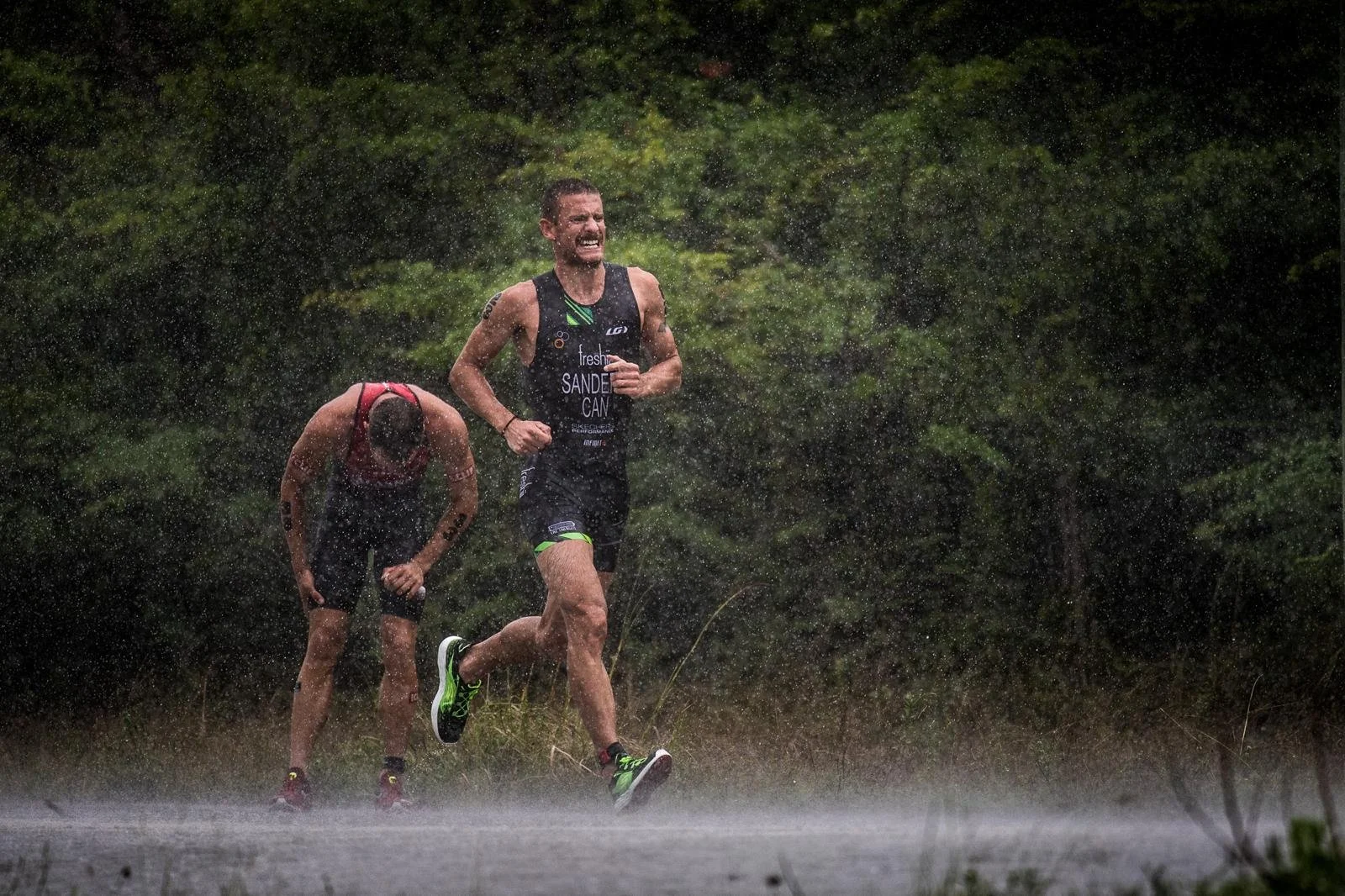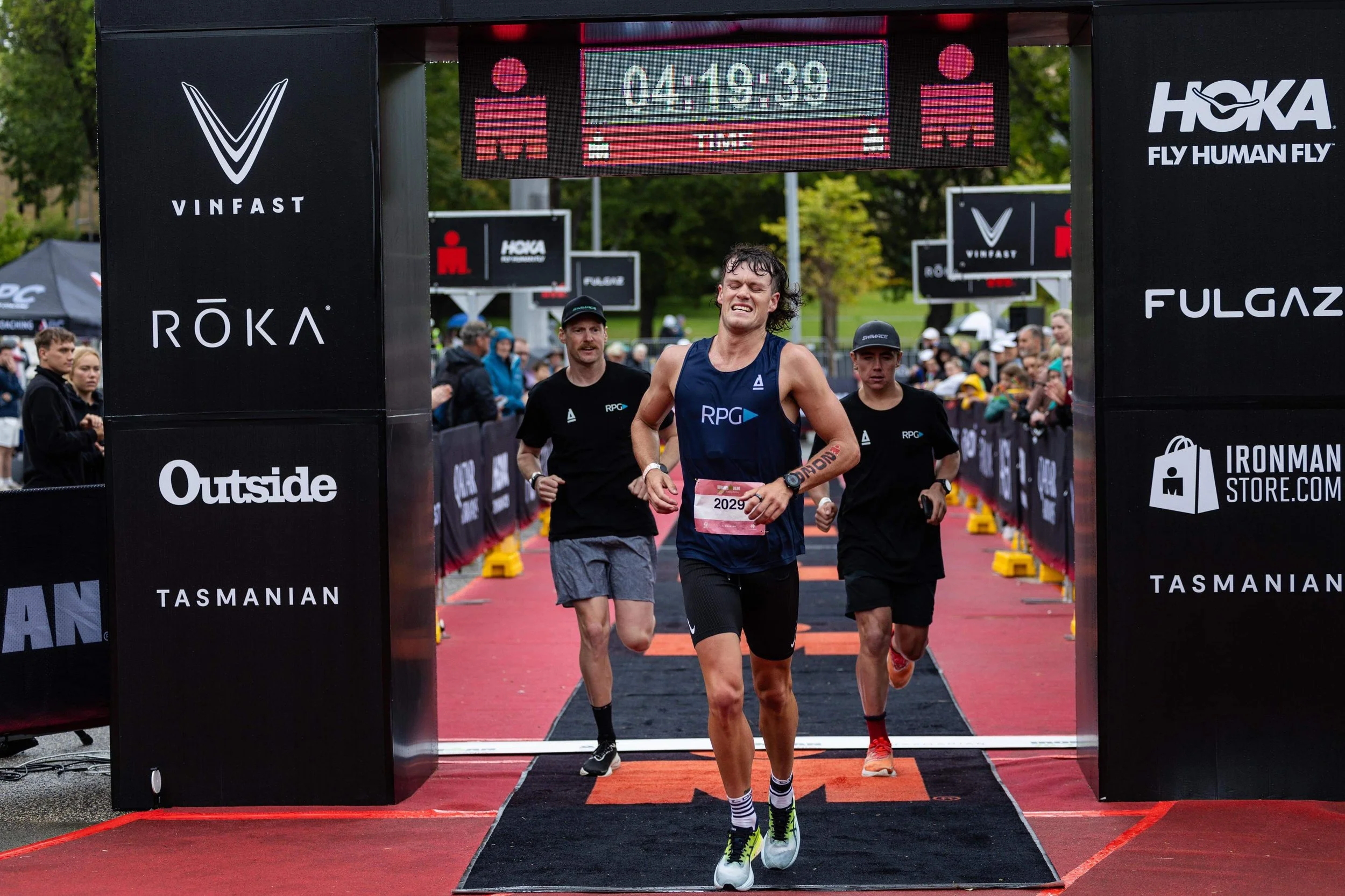Cramping; Potential causes and Solutions
Image @the_nordlys
The ‘mind over matter’ sayings and sentiments get thrown around the endurance world a lot and probably for good reason. With the right training and motivation it seems like we can all push our body far beyond what we thought we were capable of. Yet, the one physical ailment I’m yet to see any human be able to push through is the dreaded muscle cramp. One second an athlete is gliding to a personal best performance only to appear like they’ve been shot in the leg a a muscle goes into an involuntary sustained contraction.
Researching why your cramp could be happening can be a minefield to work through, which makes sense given the many multitude of reasons a cramp could be happening.
My fascination with cramping started out as simply a selfish pursuit to sort out my own cramping issues as an athlete. The interest only grew the more I worked with athletes especially in regards to dialling in their hydration and fuelling strategies. If there was a simple answer that covered all athletes cramping would be a pretty dry topic to get interested in but because there can take a little problem solving to get to the bottom of the athletes cramp issues it’s a part of the job I really enjoy and am proud to say we have a very good success rate with helping athletes overcome persistent cramping issues. While I’m forever learning I thought I would share some of my current opinions to help those who are doing what many athletes do and think ‘I just need more electrolytes!’.
Potential Causes Of Your Cramping Issues
Insufficient Conditioning: Starting at the top with one of the most likely reasons you could be cramping and the number one reason athletes really don’t like to accept; When we push our muscles beyond what they’ve been conditioned to, unfortunately muscle function can start to go a bit haywire either from extreme muscle fatigue or spinal cord over stimulation.
Insufficient Fluid Intake: We love to jump straight to electrolytes being the culprit when it comes to cramping and for sure electrolyte intake (both excessive or insufficient intake) plays an important role but you can get the electrolyte ratio perfect for your needs but if you’re simply not replacing enough fluid cramping chaos can ensue. When blood plasma volume gets too low (hypovolemia) there is a decrease in blood pressure and blood flow leaving muscles with insufficient oxygen and nutrients. One of the most common yet simple fixes that comes out sweat testing/ hydration and fuelling consults is simply identifying that the athlete is not even coming close to replacing enough total fluid. This is especially true for long course triathletes during the bike leg. We work off a very different replacement percentage to losses on the bike compared to the run. In fact it’s a lot higher on the bike than I've seen most recommend but the proof is in the results. We make sure we do a follow up with the athletes post race to check in on whether the higher hydration amount we recommend helped their race and it’s rare that it hasn’t.
Electrolytes: Too little or too much! Electrolytes facilitate fluid absorption and cells use electrolytes to conduct electrical charges, which is how your muscles contract. The idea that you don’t need electrolytes is ‘sorta’ true. ‘Sorta’ true if you’re not racing an endurance event and can sit down to a succulent Chinese meal, drink plenty of water with said succulent meal and the magical human body and its thirst response for water will balance things out nicely with the salt from the food and the water from that you’re drinking.
For those of us racing though, getting somewhere in the right ball park of sodium intake per litre of fluid consumed to match your typical sodium losses, is a huge advantage for staying well hydrated if you can get that all in with an electrolyte drink. You’ll increase fluid absorption, maintain a good thirst response and keep muscles functioning how they should be.
While some electrolyte hydration companies push the same ratio of electrolytes to match the athlete’s sweat concentrations we recommend a bit lower than that especially for those athletes trying to absorb high concentrations of carbohydrates. You can definitely run at an electrolyte deficit from your losses with little issues. It’s all about making the mix of fluid, fuel and electrolytes in your guts an appropriate osmolality to allow optimal absorption of fluid, fuel and electrolytes to take place. I digress, a topic for another blog.
Image @the_nordlys
In short, not enough electrolytes available can make it hard to drink enough fluid if your body is screaming out for salt and less of the fluid that you drink is absorbed into the cells. Electrolyte imbalance takes place and ‘bam’, the cramp sniper guns you down.
What the electrolyte companies don’t love to tell you is that all of the above can be just as applicable from taking too many electrolytes. More electrolytes in the fluid in front of you then you need when your body is hollering out for water to dilute the electrolyte buildup in the body is a problem because it can turn you off drinking the same that not enough can. If you keep drinking excessive electrolytes, your body has to get rid of the excess electrolytes, causing frequent urination which can result in dehydration, nausea, headaches and yep, you guessed it… cramping. Excessive potassium (hyperkalemia) in particular, can be a big cause of cramping. I’ve had plenty of athletes that even if they have a couple of bananas or some coconut water (which are both very high in potassium) pre swim session find their toes and feet constantly cramping.
This is why ‘salt loading’ tends to cause more problems than it prevents in practice. Yeah yeah I know there are studies around salt loading. I’m politely calling bullshit on them because I’ve never seen it work. If you’re not sweating in training much due to taper and still getting gentle electrolyte loading naturally from the food you eat with the lower sweat rate during taper week. You’re likely enjoying a pleasant electrolyte homeostasis and all will be well. If you listen to the hype and then go and dump a bucket more salt in your guts with the salt loading protocols recommended out there which is an especially precarious practice in salt water swims where a mouthful of sea water during the swim is quite normal then you’re probably setting yourself up for more cramping not less.
If you find yourself cramping during the swim warm up, especially in your fingers and toes, and you did the recommended salt loading protocol, then cutting that salt load is likely the solution to your problem.
Back Issues: When clients talk to us about their constant calf cramps in the swim, one of the first things we get them to investigate is their spine health. Those with bulged discs and L4 or L5 issues tend to get a lot more feet and calf cramps while swimming.
The solution is not easy with a variable success rate but includes a lot more core training and development of better proprioception around maintaining a neutral spine while swimming especially while swimming in open water in a wetsuit where arching the back is most prevalent. Flexibility also matters. A tight posterior chain combined with sighting during the swim can really contribute to cramping issues. For those athletes I think hitting yoga regularly is a worthy investment provided you don’t have an instructor pushing you to unnatural poses.
Bike Position: All of the below can contribute to overloading certain muscles or aggravating an athletes spine also contributing to cramping:
Bike size
Saddle height
Hip angle
Where the body is positioned in relation to the bottom bracket
The wrong saddle which doesn’t allow the athlete to rotate the hips and instead forces them to roll their spine to stay aero can also lead to cramping issues and longer term back issues.
Medications and Caffeine: Caffeines stimulating effect on the nervous system is hunky dory and very beneficial for many while racing at the right doses. Too much though or even the right amount but when mixed with poor pacing, insufficient conditioning or dehydration can really exacerbate cramping issues.
As can a lot of over the counter medications such as asthma medications. Common cramps seen with high caffeine and medications like Ventolin inhalers include finger cramps and adductor cramps while cycling.
Consult Options
Hopefully with this summary of potential causes you may be able to do some problem solving yourself but if you want to fast track finding any solutions to your cramping issues we’re regularly at events doing testing and consults or phone consults are available. Shoot us an email at info@rpgcoaching.com and we’ll get back to you as soon as we can.



